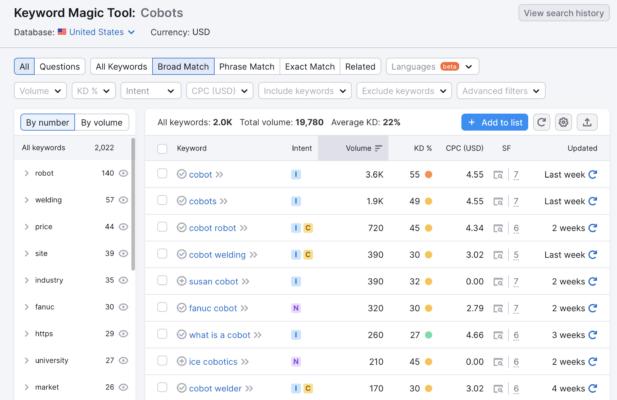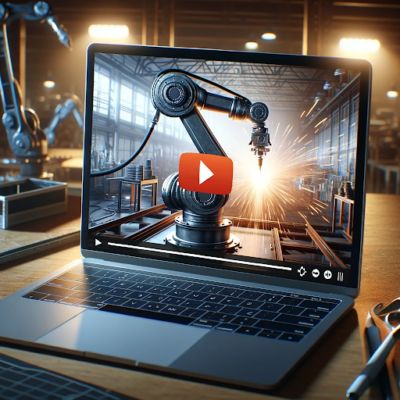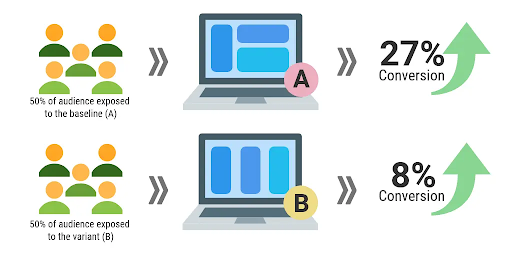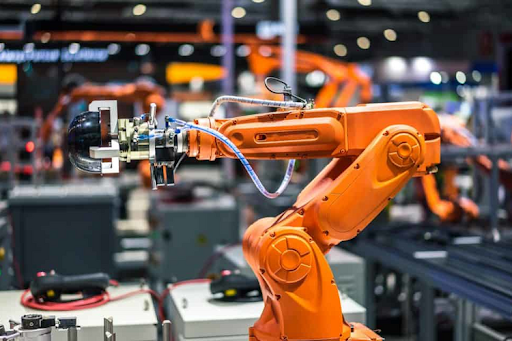Effective digital marketing can significantly boost your project’s visibility and sales. Knowing how your online ads perform financially (ROI) is crucial. Whether you’re a project engineer looking to maximize your advertising budget or a newcomer eager to learn, this guide is for you. We’ll cover essential strategies to get the most out of your ad spend, including choosing the best platforms, creating impactful content, and using data to guide your decisions.
Let’s learn how to make your ads work harder for your projects!
What Does ROI in Online Advertising Mean?
What is ROI?
Return on Investment (ROI) measures the profitability of your investments, comparing the returns you get to the cost you put in. In the context of online ads, ROI helps you understand whether the money you’re spending on advertising is generating enough sales or leads in the robotics industry.
Why is ROI Important for Project Engineers?
As a project engineer, your projects often involve big budgets and high stakes. Knowing the ROI of your online ads can make the difference between a successful project and wasted resources. It allows you to justify your advertising spend to stakeholders and refine your marketing strategies based on what’s most effective.
By tracking ROI, you can:
- Optimize Budgets: Allocate more funds to high-performing ads and cut back on those that don’t deliver.
- Enhance Decision-Making: Use concrete data to support your strategies and adjustments.
- Prove Value: Show clear links between advertising spend and project outcomes, which is crucial in securing future budgets.
Understanding the Audience:
Know Who You’re Talking To:
The first step to successful advertising is knowing your audience. In robotics, your audience could include tech enthusiasts eager for the latest gadgets or industry professionals focused on practical applications in fields like manufacturing, healthcare, or logistics.
Tailor Your Messages:
Customizing your ads to match the interests and language of different audience segments can dramatically increase your campaign’s success. For example:
- Tech Enthusiasts: They might be captivated by ads that showcase innovative technology and breakthroughs.
- Industry Professionals: They often prefer ads that emphasize efficiency and real-world applications.
Engage & Convert:
By deeply understanding your audience’s needs and interests, you can craft ads that not only grab their attention but also encourage engagement and lead to conversions.
Reflect & Adapt:
Before launching an ad, ask yourself: Who is my audience? What do they value? How can my ads reflect this? This approach isn’t just smart; it’s essential for making your ads effective and impactful in the competitive world of robotics.

6 Proven Ways to Maximize ROI in Online Ads for Robotics:
1. Choosing the Right Platforms:
Not all platforms are created equal, especially in a niche field like robotics. While LinkedIn might be a goldmine for B2B interactions, Facebook and Instagram could be better for reaching a broader audience interested in tech. Have you tried Qviro Ads? Knowing where your audience hangs out and hunts for information is crucial.
2. Crafting Your Message:
Got something to say? Make it snappy and irresistible! Your value proposition should scream “innovation” while also being relatable and easy to digest. Remember, even the most sophisticated robotic technology won’t sell itself without a compelling story. What problems does your robot solve? How does it make life easier or business more efficient?

3. Utilizing SEO & Keywords:
When it comes to online advertising, SEO cannot be ignored. Are your ads optimized for search engines? Incorporating the right keywords related to robotics and your specific products can elevate your visibility and attract more clicks. But it’s not just about being seen; it’s about being seen by the right people.

4. Budget Management:
Are you spending on ads without a plan? Let’s refine your budget management to make sure each dollar you invest really counts. Here are some straightforward steps to manage your advertising budget effectively:
- Define Your Goals: Clearly outline what you hope to achieve with your campaigns, such as increasing brand awareness or generating sales.
- Analyze Past Results: Use data from previous campaigns to see what worked best. Put more money into successful strategies and reduce spending on less effective ones.
- Segment Your Budget: Split your budget across different campaigns based on their importance and potential return. Keep some funds flexible for adjusting as needed.
- Monitor and Adjust: Keep a close eye on how campaigns perform. Be ready to shift funds towards high-performing ads and cut back on those that aren’t working.
- Set Specific Cost Targets: Define specific cost-per-action targets for each campaign to measure how cost-effective your ads are.
- Regularly Review Performance: Regularly check the performance of your campaigns and adjust your spending to optimize results.
By following these steps, you can spend smarter and increase the impact of your advertising efforts.
5. Leveraging Visuals & Media:
Visuals are crucial in advertising, especially with complex technology like robotics. A compelling video or image can showcase your technology’s capabilities effectively. It’s important to ensure your ads are visually appealing and informative to grab and maintain attention.

6. A/B Testing & Analytics:
A/B testing lets you compare two ad strategies to see which one your audience prefers. By analyzing the results and using analytics, you can fine-tune your ads for better performance. This ongoing process improves your ads’ effectiveness and boosts your return on investment over time.

3 Real-Life Case Studies:
Let’s explore how various robotics companies have succeeded with their online ads. By looking at their strategies, we’ll learn what worked for them and what challenges they faced. This analysis will help us identify effective tactics and best practices that grabbed their target audience’s attention and increased engagement.
We’ll also examine their setbacks to better understand the complexities of online advertising in robotics. From this, we’ll gather practical lessons and insights to improve our own ad campaigns, helping us avoid common mistakes and mirror the success of these industry leaders.
1. ABB Robotics: Precision Targeting on LinkedIn
- Background: ABB Robotics, a leader in industrial automation, needed to promote its new collaborative robots.
- Strategy: The company utilized LinkedIn ads, focusing on the safety features and ease of integration, aimed directly at manufacturing professionals.
- Results: The campaign led to a 30% increase in direct inquiries from the target sector, showcasing the power of precise, platform-appropriate messaging.
- Challenges & Solutions: Initial ads were too broad, gaining little traction. ABB quickly refined their approach, focusing sharply on the needs and language of their audience, which turned the campaign around.
2. Boston Dynamics: Viral Videos on YouTube
- Background: Boston Dynamics aimed to demonstrate the advanced capabilities of its robots to a wide audience.
- Strategy: The company created engaging videos showing robots performing complex tasks, which were shared widely on YouTube.
- Results: These videos became viral, significantly boosting brand recognition and attracting high-profile partnerships.
- Challenges & Solutions: The technical complexity of the content initially limited viewer engagement. The company adapted by simplifying explanations and highlighting real-world applications, making the content more relatable and understandable.
3. Universal Robots: Engaging SMEs via Facebook
- Background: Universal Robots targeted small and medium-sized enterprises (SMEs) with its affordable automation solutions.
- Strategy: Ads on Facebook highlighted the robots’ cost-effectiveness and scalability, featuring success stories from real customers.
- Results: This approach resonated with SMEs, leading to increased market share and sales conversions from this segment.
- Challenges & Solutions: Initially, diverse needs and tight budgets among SMEs made messaging difficult. Universal Robots refined its ads to better communicate the direct benefits and potential ROI, leading to improved engagement.
Lessons Learned:
- Targeted Communication: Customized ads that speak directly to an audience’s specific interests and needs can drive engagement and conversions.
- Platform Optimization: Choosing the right platform for the message is crucial—LinkedIn for B2B, YouTube for demonstrations, Facebook for broad consumer engagement.
- Show Real Benefits: Using customer testimonials and practical examples in advertising helps translate complex technology into real-world advantages, enhancing credibility and interest.
Conclusion:
Boosting your ROI in online advertisements isn’t just about spending money—it’s about spending it smartly. By understanding your audience, choosing the right platforms, crafting compelling messages, and continuously optimizing your strategies, your robotics company can achieve remarkable advertising success. So, are you ready to revamp your approach
Visit Qviro's Seller Solution
7 Digital Strategies to Market Your Robotics
Join the Qviro community to enhance your digital marketing skills and maximize your advertising ROI! Join here.
Are You Looking For a System Integrator?








